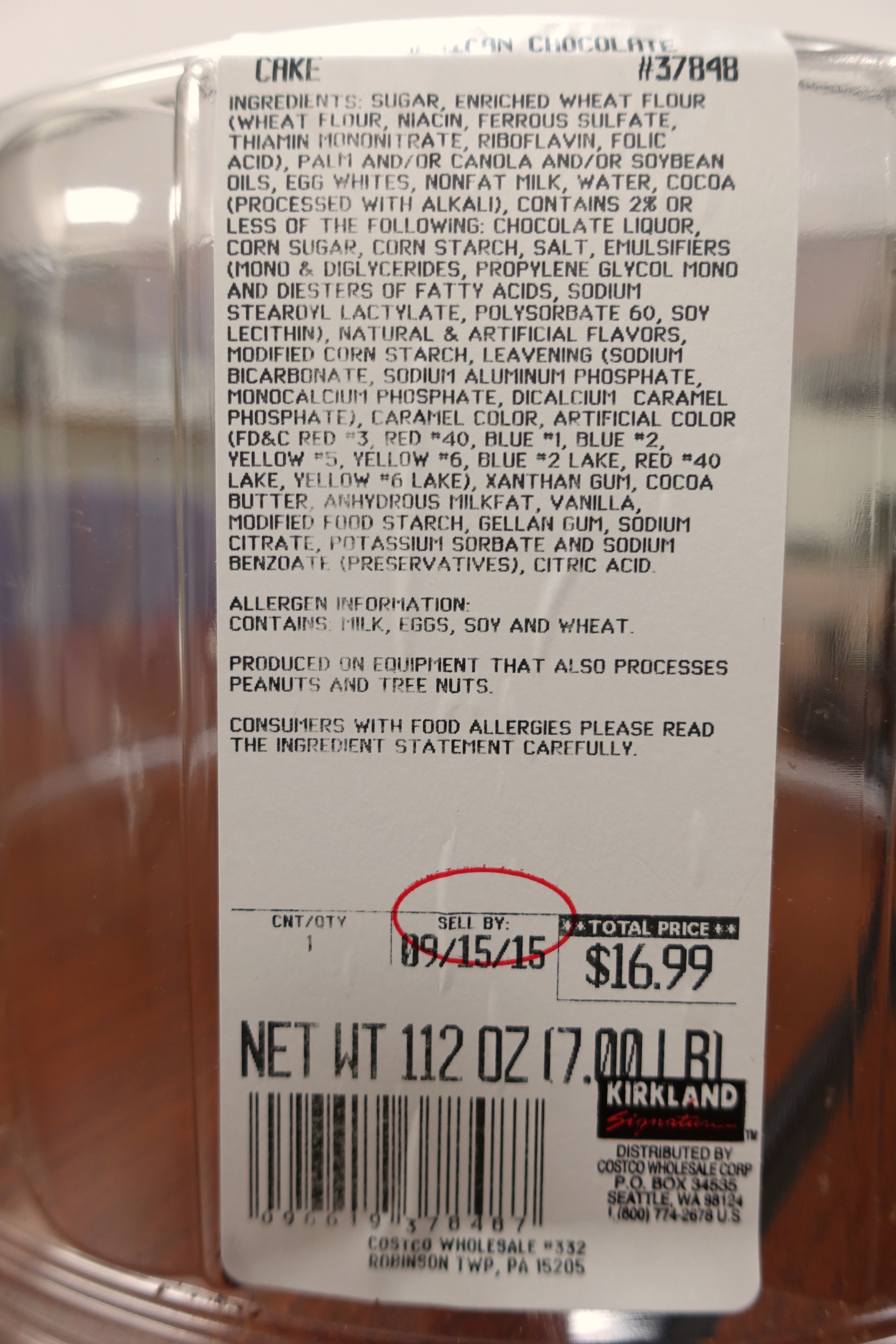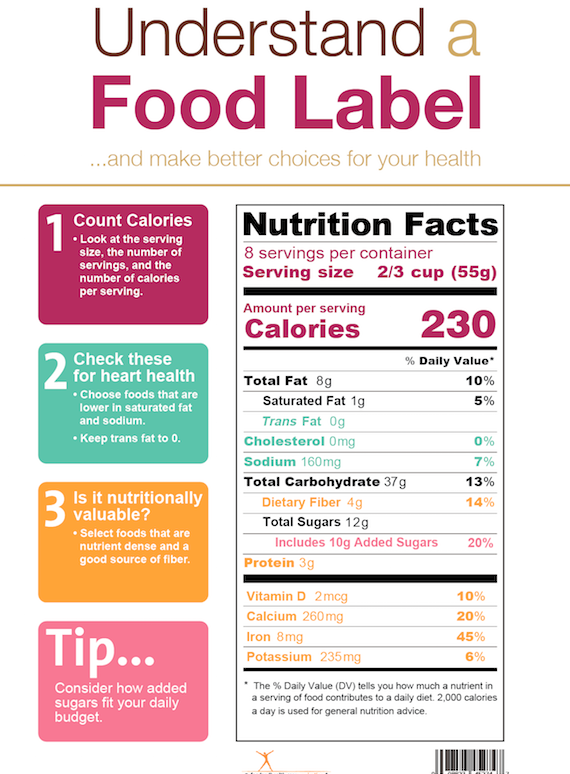40 reading labels for sugar
Learning To Read Labels :: Diabetes Education Online The grams of sugar listed include both natural sugars, from fruit or milk, and added sugars. On a nutrition food label, the total carbohydrate includes the sugar. Some Nutrition Facts labels may also list sugar alcohols under total carbohydrate. Sugar alcohols may be found in products that are labeled “sugar-free” or “no sugar added.” Sugar labelling - Food Standards Sugar labelling. The Australia New Zealand Food Standards Code (the Code) includes requirements for food labels to include the total amount of sugars in the nutrition information panel (NIP). Total sugars includes sugar that is naturally present in the food and sugar that has been added as an ingredient. The Code contains requirements for foods ...
Sugar - natural, added, health risks, cutting intake, substitutes ... The amount of sugar per 100g is an easy way to compare products for their sugar content. For example, if one cereal brand has 10g of sugar per 100g and another has 5g of sugar per 100g, the second option may be the better one. The amount of sugar per serve shows how much sugar you will consume in one suggested serve of the product.
Reading labels for sugar
Food Labels (for Teens) - Nemours KidsHealth Making Food Labels Work for You. The first step in making food labels work for you is to look at the entire label. If you focus on only one part — like calories or vitamins — you may not be getting the full story, like how much added sugar or fat is in the product. Serving Size. Always start with the serving size. How To Read Food labels for Sugar | My Sugar Free Kitchen On the label check the sugars in the nutrition panel. 5g/ml or less of sugar per 100g/ml = this would count as low sugar content. It means 5% of the ingredients are sugar Between 5g/ml and 20g/ml of sugar per 100 grams = medium sugar content. With 20ml of sugar per 100 ml, this means the product is 20% sugar…not so good. Label Reading the Healthy Way - Alberta Health Services Reading. To learn more about reading food labels go to . Canada.ca and search understanding food labels. Free, No, Zero, Without: The amount of the nutrient in the food is so small that it is not counted. Some examples include calorie-free, sugar-free, fat-free, or sodium-free. Low, Little, Few: Product has a very small amount of the nutrient.
Reading labels for sugar. Added Sugars on the New Nutrition Facts Label | FDA Let the Nutrition Facts Label Be Your Guide The new Nutrition Facts label can help you compare and choose foods that are lower in added sugars. Check the label to see if foods are LOW or HIGH in... How to Read Labels for Added Sugar | Naturally Savvy So, to get a better idea of how much added sugar there is requires a bit of label sleuthing. Here are all the many types of sugar and their various names to hunt out in an ingredient list: Anhydrous dextrose Barley malt Beet sugar Brown sugar Cane juice crystals Cane sugar Caramel Corn sweetener Corn syrup Corn syrup solids Confectioner's sugar Reading food labels: Tips if you have diabetes - Mayo Clinic Look for foods with 3 or more grams of fiber. Put sugar-free products in their place Sugar-free doesn't mean carbohydrate-free. Sugar-free foods may play a role in your diabetes diet, but remember that it's equally important to consider carbohydrates as well. A sugar-free label means that one serving has less than 0.5 grams of sugar. How to Read the Nutrition Facts Label on Packaged Foods Sodium. Many people get far too much salt, or sodium. Most of it is in packaged foods and restaurant items. Limit salt to 2,300 milligrams (about 1 teaspoon) daily. If you have high blood pressure ...
How to Read Food Labels When You Are Diabetic - Diabetics Weekly Study the Carbohydrate Content in Detail. This is the most important aspect of how to read food labels when you have diabetes. The total amount of carbohydrates breaks down into complex carbohydrates, sugar, and fiber. Don't hone in on zero-sugar foods, as foods like milk and fruit contain natural sugars. By the same token, make sure to watch ... Food Labels | CDC All the numbers on this label are for a 2/3-cup serving. This package has 8 servings. If you eat the whole thing, you are eating 8 times the amount of calories, carbs, fat, etc., shown on the label. Total Carbohydrate shows you types of carbs in the food, including sugar and fiber. Choose foods with more fiber, vitamins, and minerals. Different Words for Sugar on Food Labels - Healthy Eating Common Names For Sugar. According to the U.S. Dept. of Health and Human Services, added sugars show up on food and drink labels under the following names: Anhydrous dextrose, brown sugar, cane crystals, cane sugar, corn sweetener, corn syrup, corn syrup solids, crystal dextrose, evaporated cane juice, fructose sweetener, fruit juice ... Understanding food labels - Canada.ca Find information on food labels and how to understand them. Learn about nutrition facts tables, serving size, list of ingredients, % daily value and nutrition claims. ... Meaning of fat-free, no added sugar, low sodium, other nutrient content claims. Percent daily value. How to calculate % daily value on a nutrition facts table, how to use ...
Diabetes Food Label Reading: Quick Tips to Shop Smarter It's also good to understand that anything labeled "sugar free" can technically still have up to 0.5 grams of sugar per serving, so it's not always as straightforward as it seems. "Sugar free" and "no added sugar" does not mean carb free. Are You Confused? How to Read Sugar Labels - Thin Strong Healthy You need to know. Start dividing those grams of sugar by 4 to give you the teaspoons in a serving. Then look at the serving to see what a realistic amount would be for an actually serving. Learn to read sugar labels. They think you don't know what they're doing. Now you do. Understanding food labels - Diabetes UK Here's the difference: Fat free: has to have no fat, but check the ingredients list for added sugar, which are often used to replace the fat. Sugar free: check the ingredients list for fats which may replace the sugar. Low fat: the product has 3g or less of fat per 100g. Low sugar: has less than 5g of sugar per 100g. how to understand food labels - Eat For Health sugar: Dextrose, fructose, glucose, golden syrup, honey, maple syrup, sucrose, malt, maltose, lactose, brown sugar, caster sugar, maple syrup, raw sugar, sucrose. Fibre Not all labels include fibre. Choose breads and cereals with 3g or more per serve Nutrition Information Servings per package – 16 Serving size – 30g (2/3 cup) Per serve Per 100g
How to Read a Food Label to Make Sure It's Keto in 3 Easy Steps Bacon is a great example because it's hard to find bacon that doesn't have sugar listed as one of its first 5 ingredients. And because… bacon. 3 no-sugar bacon options 1. Look for a brand that indicates "No Sugar Added". Read the ingredient list to verify. Pederson's brand with the No Sugar-Whole30 Approved seal is my personal choice. 2.
Decoding Diabetes: How to Read Nutrition Labels | Accu-Chek The calories in the foods you eat are made up of fat, protein, and carbohydrates. Nutrition labels are typically made based on the assumption that you have a daily diet of 2,000 calories (kilocalories). Some labels will have a footnote that expand on this concept, providing numbers for both 2,000 and 2,500-calorie (kilocalorie) diets. Nutrients.
Watermelon Sugar - Wikipedia "Watermelon Sugar" is a rock, funk-pop, indie pop, song with 1970s and soul elements. It is composed in 4 4 time and the key of A minor, with a tempo of 96 beats per minute and a chord progression of Dm 7 –Am 7 –C–G. The track has a structure of verse, pre-chorus, chorus, verse, pre-chorus, chorus, post-chorus, bridge, chorus, post-chorus and runs for two minutes and fifty-three seconds.
› assets › infoLabel Reading the Healthy Way - Alberta Health Services Reading. To learn more about reading food labels go to . Canada.ca and search understanding food labels. Free, No, Zero, Without: The amount of the nutrient in the food is so small that it is not counted. Some examples include calorie-free, sugar-free, fat-free, or sodium-free. Low, Little, Few: Product has a very small amount of the nutrient.
› reading-food-labelsReading Food Labels | ADA - American Diabetes Association Put food labels to work. The Nutrition Facts labels on foods are really the key to making the best choices. We'll cover the basics so that these labels make shopping easier for you. You've heard it all. From carb-free to low-carb, to whole and empty carbs, it's hard to know what it all means. Blood sugar highs and lows aren't always ...
How to Read Nutrition Labels for Sugar - hekagoodfoods The number of grams of sugar. Keep in mind, one gram of sugar is roughly equivalent to 1/4 teaspoon of sugar. A percentage indicating how much of your recommended daily intake the item contains. While this is helpful to reference, the FDA recommends natural and added sugars account for no more than 10% of your daily caloric intake.
Reading Food Labels When You Have Diabetes - WebMD It has measurements of fat, cholesterol, sodium, carbohydrates, protein, vitamins, and minerals for a typical amount of that food. This information can make it easier for you to choose foods that...
› sugarSugar - natural, added, health risks, cutting intake ... The amount of sugar per 100g is an easy way to compare products for their sugar content. For example, if one cereal brand has 10g of sugar per 100g and another has 5g of sugar per 100g, the second option may be the better one. The amount of sugar per serve shows how much sugar you will consume in one suggested serve of the product.





Post a Comment for "40 reading labels for sugar"